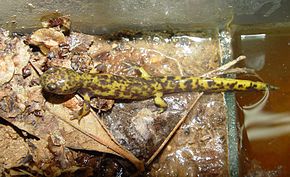Caving in search of the world’s rarest newt

Cave tourism, pet trade, deforestation threathen one of the world's rarest newts
Funding for this project has now finished
The problem
Gorgan’s cave newts are so rare that we don’t know the full extent of where they live. One of the rarest amphibians in the world, the species is endemic to Northeastern Iran, found only in Golestan province. Currently the only known population is in Shir-Abad Cave, set within a beautiful forested region, surrounded by waterfalls. Gorgan’s cave newts can be found in the ponds deep inside the cave. Unfortunately, due to its spectacular natural beauty and wild swimming, over the last few years tourism has become increasingly popular in the area. As more and more visitors come, this rare cave newt, and its fragile home, are becoming more threatened by human disturbance.


The Shir-Abad cave, image copyright www.theiranproject.com

The solution
We’re glad to provide funds to help Saeed Hosseinian and his team to take the crucial steps towards protecting these beautiful creatures. Saeed is hoping to discover new habitats that fit what we know are the species’ requirements or, hopefully, new populations. The Gorgan Cave newt, or salamander as it’s often known, was last assessed in 2008. Due to its scarcity, it was deemed critically endangered and it was thought that only 100 breeding adults remained.

Since then, Saeed and his team decided to carry out comprehensive fieldwork within the Hyrcanian forests, along the coastal region of the Caspian Sea. This was to find other probable populations or suitable habitat for the species. Sadly, these investigations were not successful. However, importantly, the work did increase awareness about the newts and their importance amongst the local people.
Now, Saeed plans to monitor the waterfalls throughout the year. By intensively studying these habitats, he hopes to gain a good understanding of the species, and what its needs are. When he has more news, he will report back. Any new information he gathers will help us understand more about the ecology of the Gorgan cave salamander. This will, in turn, help protect the species and its habitat from any further loss in the future.
Thank you to all our donors who helped us fund this work. You can help us support more projects like this with a donation today:
